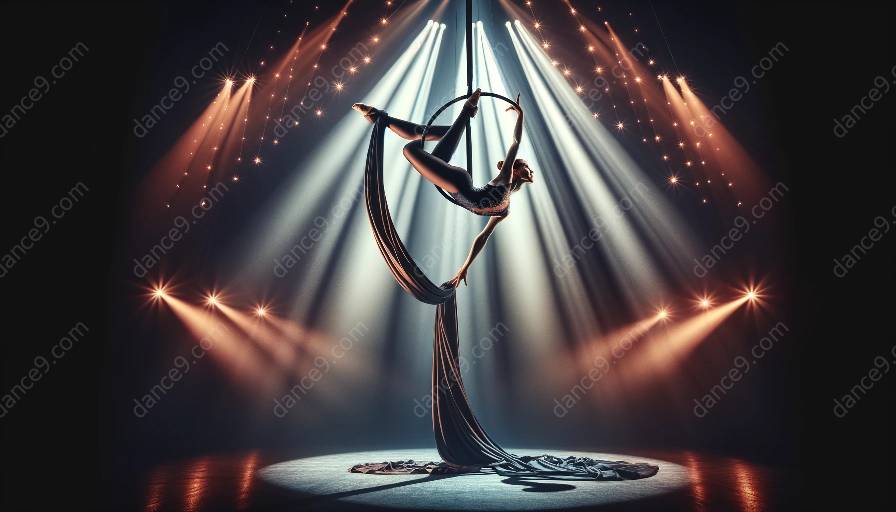Aerial dance is a breathtaking combination of dance and acrobatics that is performed in the air, using suspended apparatus such as silks, hoops, and trapezes. While aerial dance has gained popularity in the contemporary dance world, its roots can be traced back to various historical and cultural contexts, each contributing to its evolution and significance.
The Origins of Aerial Dance
The concept of aerial dance has been present in various cultures throughout history, often as a part of traditional rituals, ceremonies, and entertainment. In ancient civilizations, such as the Greeks and the Chinese, performances involving aerial elements were commonly featured in religious festivals and celebrations.
One of the earliest forms of aerial dance can be seen in the traditional circus acts, where acrobats and performers showcased their skills on aerial apparatus. These acts laid the foundation for the modern aerial dance techniques and choreography that we see today.
Evolution of Aerial Dance
As time progressed, aerial dance continued to evolve and adapt to the changing artistic landscape. In the early 20th century, aerial dance became a prominent feature in theater and vaudeville shows, captivating audiences with its daring and graceful movements.
During the mid-20th century, the influence of modern dance pioneers, such as Martha Graham and Isadora Duncan, sparked a new wave of experimentation and innovation in aerial dance. Choreographers and dancers began incorporating aerial elements into their performances, blurring the lines between dance, acrobatics, and theater.
In the latter part of the 20th century, the emergence of contemporary circus arts, such as Cirque du Soleil, brought aerial dance to new heights, pushing the boundaries of what was possible in terms of skill, creativity, and expression. Aerial dance became recognized as a legitimate art form, captivating audiences with its awe-inspiring beauty and technical prowess.
Cultural Significance
Throughout history, aerial dance has been intertwined with cultural traditions and expressions, shaping and reflecting the values and beliefs of different societies. In many cultures, aerial dance is seen as a symbol of strength, freedom, and transcendence, with performers embodying these ideals through their movements and storytelling.
For some indigenous communities, aerial dance holds deep spiritual and symbolic meanings, serving as a way to connect with the natural world and ancestral heritage. In other contexts, aerial dance has been used as a form of protest, empowerment, and social commentary, shedding light on important issues and sparking conversations through movement and visual storytelling.
Aerial Dance in Contemporary Settings
Today, aerial dance continues to thrive in contemporary dance practices, with an increasing number of choreographers, dancers, and enthusiasts embracing its unique blend of athleticism, grace, and artistry. Aerial dance classes and workshops have become popular offerings in dance studios and fitness centers, providing individuals with the opportunity to experience the thrill and creativity of dancing in the air.
Furthermore, aerial dance has found its place in the world of performing arts, with professional companies and solo artists showcasing their talent and innovation on national and international stages. The integration of aerial dance into multidisciplinary collaborations, such as with music, visual arts, and technology, has expanded the possibilities of its expression and relevance in the contemporary art scene.
Conclusion
Aerial dance has a rich and diverse history that spans across different cultures, traditions, and artistic movements. Its evolution from ancient rituals to contemporary performances demonstrates its enduring appeal and adaptability, making it a dynamic and significant form of expression in the world of dance. By understanding the historical contexts of aerial dance, we gain a deeper appreciation for its cultural significance and its ability to inspire creativity, connection, and transformation.













































































